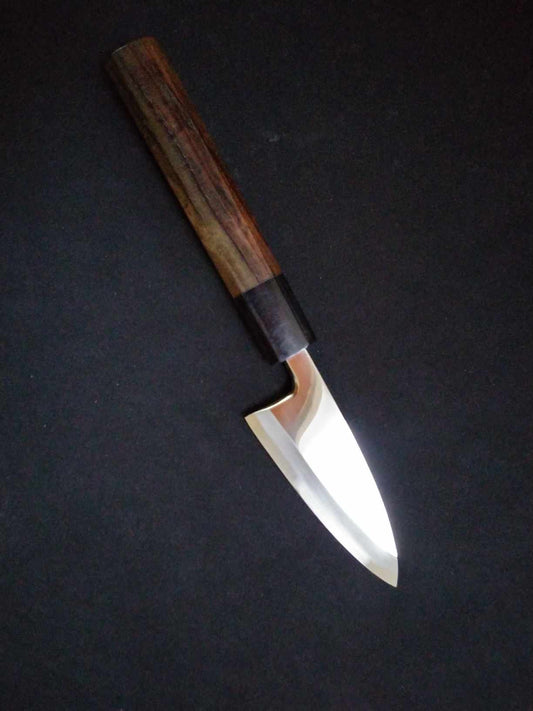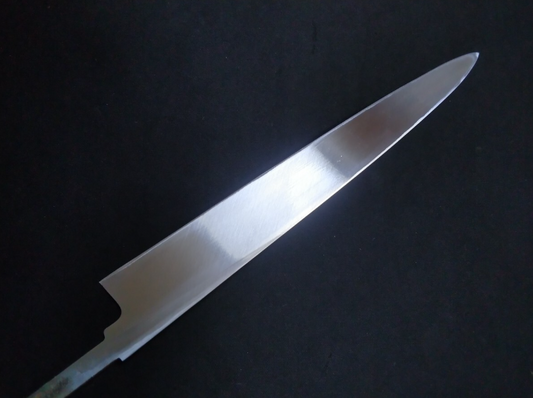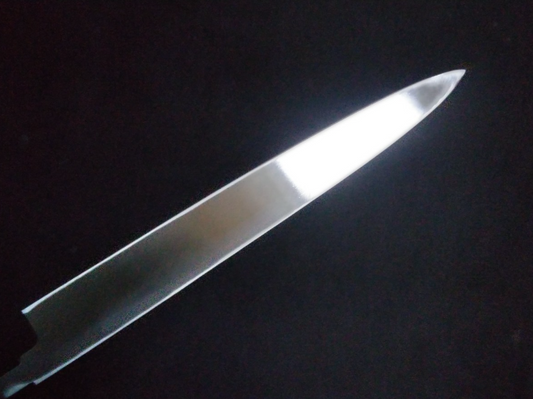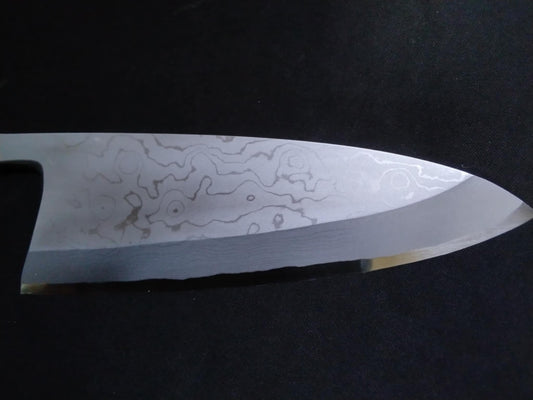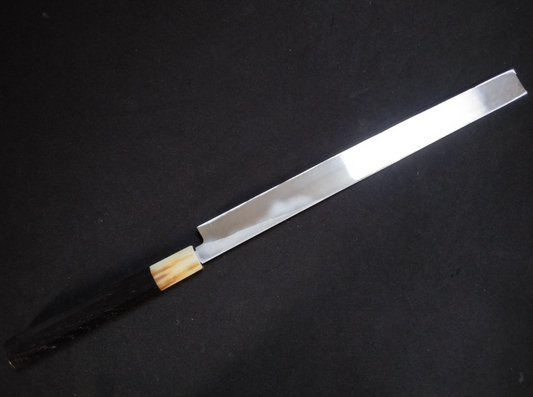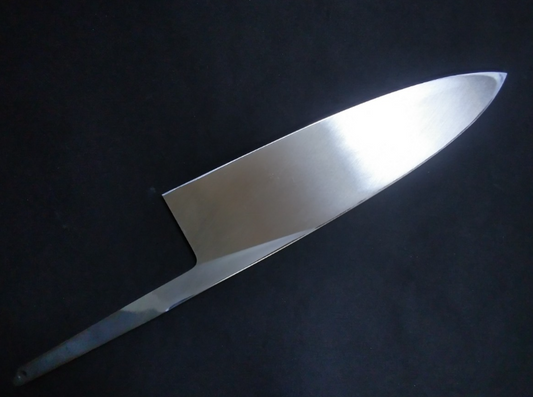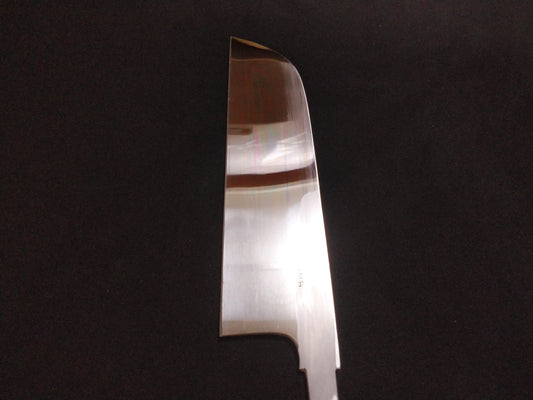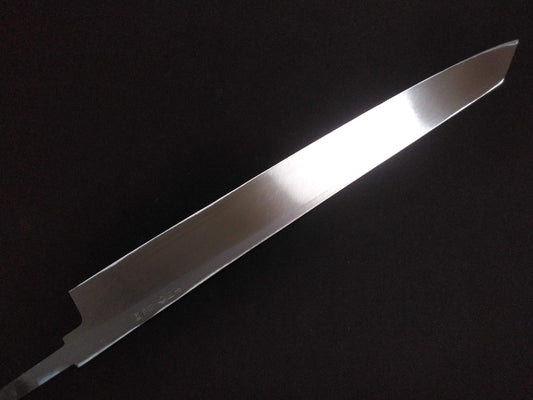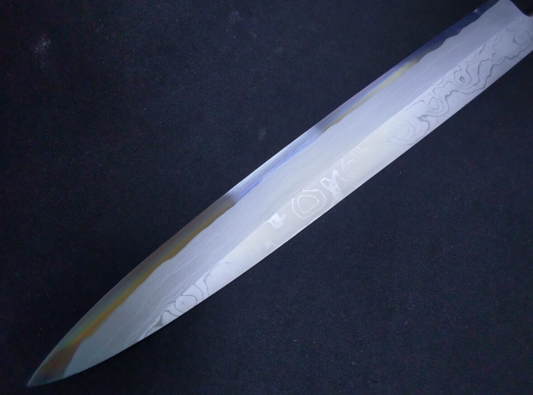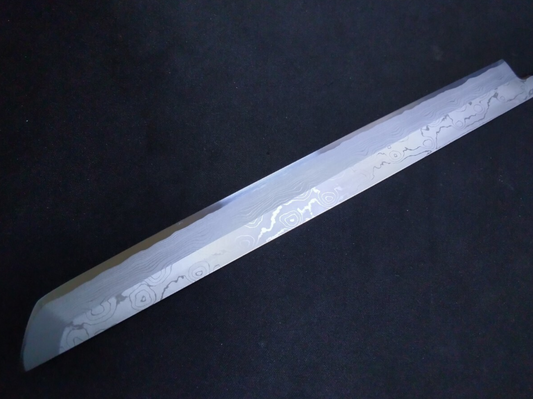
White Steel #2
-
Pure steel, pure skill.
White Steel #2 isn’t just a material—it’s a bridge between centuries of Japanese craftsmanship and the chef’s hand today. Discover why this high-purity carbon steel is trusted by masters, loved by beginners, and celebrated for the way it sharpens, slices, and lives in harmony with its owner.
-
White Steel #2 Japanese Knife Collection
-
White Steel #2 KoDeba(Small Deba) 90mm-Mirror Polished(one side)
Regular price $220.00 CADRegular priceUnit price / per$0.00 CADSale price $220.00 CAD -

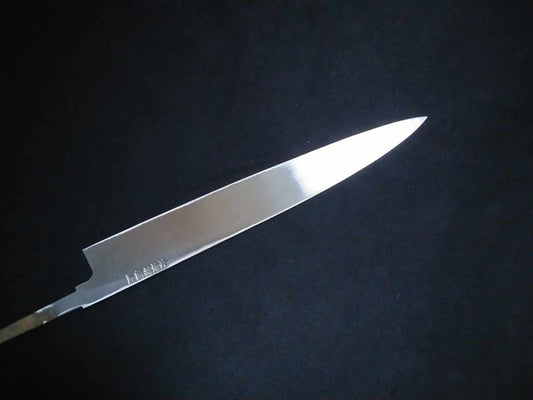 Sold out
Sold outWhite Steel #2 Yanagiba 210mm
Regular price $260.00 CADRegular priceUnit price / per$0.00 CADSale price $260.00 CADSold out -
White Steel #2 Yanagiba 240mm-Kido Finishing
Regular price $260.00 CADRegular priceUnit price / per -
White Steel #2 Yanagiba 270mm-Kido Finishing
Regular price $300.00 CADRegular priceUnit price / per -

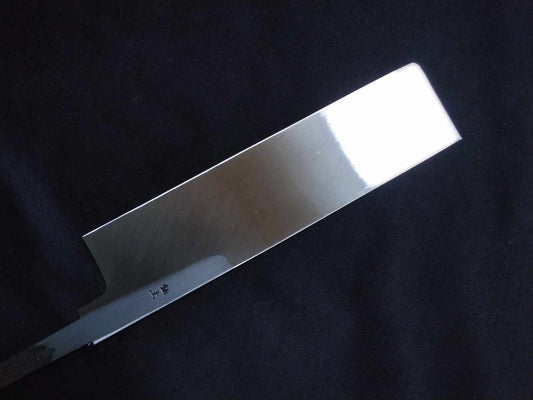 Sold out
Sold outWhite Steel #2 Usuba 210mm
Regular price $346.00 CADRegular priceUnit price / per$334.00 CADSale price $346.00 CADSold out -
White Steel #2 Damascus Deba 150mm-Mirror Polished Blur Finish
Regular price $346.00 CADRegular priceUnit price / per$0.00 CADSale price $346.00 CADSold out -
White Steel #2 Takohiki 270mm-Kido Finishing
Regular price $350.00 CADRegular priceUnit price / per -

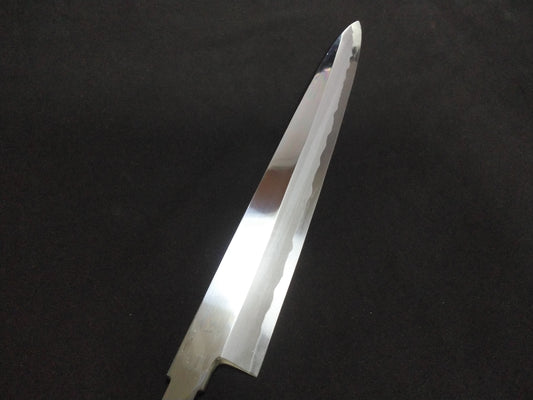 Sold out
Sold outWhite Steel #2 Yanagiba 330mm
Regular price $380.00 CADRegular priceUnit price / per$380.00 CADSale price $380.00 CADSold out -
White Steel #2 Yanagiba 330mm-Mirror Polished(both sides)
Regular price $387.00 CADRegular priceUnit price / per$0.00 CADSale price $387.00 CADSold out -
White Steel #2 Yanagiba 300mm-Mirror Polished(one side)
Regular price $431.00 CADRegular priceUnit price / per$0.00 CADSale price $431.00 CAD -
White Steel #2 Damascus Deba 210mm-Mirror Polished Blur Finish
Regular price $450.00 CADRegular priceUnit price / per$0.00 CADSale price $450.00 CADSold out -
White Steel #2 Kamausuba 210mm-Mirror Polished(both sides)
Regular price $460.00 CADRegular priceUnit price / per$460.00 CADSale price $460.00 CADSold out -
White Steel #2 Yanagiba (Kiritsuke) 300mm-Mirror Polished(one side)
Regular price $469.00 CADRegular priceUnit price / per$0.00 CADSale price $469.00 CAD -
White Steel #2 Yanagiba 330mm-Mirror Polished(one side)
Regular price $500.00 CADRegular priceUnit price / per$0.00 CADSale price $500.00 CAD -
Wihte Steel #2 Damascus Yanagiba 270mm- Mirror Polished Blur Finish
Regular price $508.00 CADRegular priceUnit price / per -
Wihte Steel #2 Damascus Yanagiba (Sakimaru) 300mm- Mirror Polished Blur Finish
Regular price $546.00 CADRegular priceUnit price / per
KIREAJI's Three Promises to You
-

1. Forged in the Legacy of Sakai
From Sakai City—Japan’s renowned birthplace of professional kitchen knives—each blade is crafted by master artisans with over six centuries of tradition. Perfectly balanced, enduringly sharp, and exquisitely finished, every cut carries the soul of true craftsmanship.
-

2. Thoughtful Care for Everyday Use
Every knife includes a hand-fitted magnolia saya for safe storage. Upon request, we offer a complimentary Honbazuke final hand sharpening—giving you a precise, ready-to-use edge from day one.
-

3. A Partnership for a Lifetime
A KIREAJI knife is more than a tool—it is a lifelong companion. With our bespoke paid aftercare services, we preserve its edge and beauty, ensuring it remains as precise and dependable as the day it first met your hand.
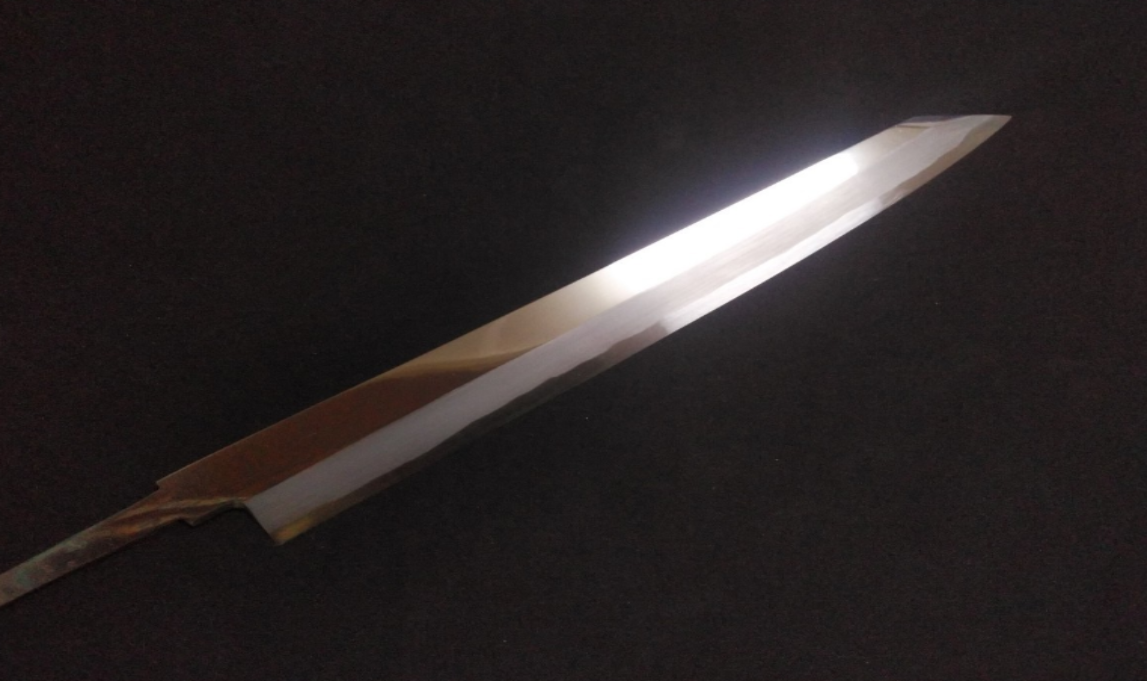
Why Many Product Photos Show Only the Blade
At KIREAJI, every knife is made to order in Sakai, Japan. Photos show the blade before the handle is attached, allowing artisans to perfect the balance and edge for your specific order. Your knife arrives fully finished — tailored just for you.

Global Delivery from Sakai
Across the world, discerning cooks seek authentic Japanese knives from Sakai — Japan’s legendary knife-making city with over 600 years of tradition.
At KIREAJI, we work alongside master artisans in Sakai to fulfill that desire, shipping genuine handcrafted knives directly from the workshop to kitchens worldwide.
White Steel #2: The Honest Beauty of Steel That Lives in the Hand of the Chef
-
-
To a chef, a knife is more than just a tool. It’s an extension of the hand, a brush that expresses one’s technique and philosophy. Among the many steels that form the heart of Japanese knives, White Steel #2 stands out as a material that has carried Japan’s forging tradition into the modern kitchen, and is still trusted by countless professionals today.
-

A Steel That’s Honest and Pure
White Steel #2 is a high-purity carbon steel. It contains no chromium or tungsten additives, relying only on the essential elements. Because of that, it is known for its "honesty" as a material. It responds faithfully to the intentions of the blacksmith who forges it and to the hands of the sharpener who maintains it. The chef’s skill appears directly on the edge of the blade — and this is what defines White Steel #2’s true value.
-
Welcome to the Culture of Sharpening
One of the main reasons why White Steel #2 is loved by chefs and culinary enthusiasts worldwide is its ease of sharpening. The feeling of the blade gliding smoothly over a whetstone is deeply satisfying — it feels as though you are breathing life back into the knife with your own hands. Sharpening is no longer a chore; it becomes a conversation with the knife itself. This is the depth of Japanese knife culture, and White Steel #2 embodies it in its purest form.
-

Trusted by Professionals, Ideal for Beginners
Though many associate “white steel” with expert-level tools, White Steel #2 is actually well-suited for beginners as well. It’s easy to work with, and because both blacksmiths and sharpeners are deeply familiar with it, quality and consistency are very high. With just basic daily maintenance, the blade retains its edge for a long time, offering exceptional cost performance.
In Japan, it is often the first steel young apprentices learn to forge and sharpen. In that sense, it represents both a foundation and a trusted entry point into the world of Japanese blades.
-
A Bridge Between Tradition and the Present
The history of White Steel #2 is closely tied to the evolution of modern Japanese blade-making. This pure, unadorned steel reflects a philosophy that stands in contrast to mass production: a devotion to careful, individual craftsmanship.
Choosing this material means more than just choosing good performance. It is a declaration of respect — for cooking as an act of care and for the tools that support it. It is a decision to grow alongside your knife.
-
White Steel #2 may not be flashy, but its quiet strength and sincerity are deeply reassuring. If you see your knife not just as a tool but as a partner in your craft, White Steel #2 may very well be the first blade you’ll want to keep by your side for a lifetime.
What Is White Steel #2?
-
— The Purity Behind the Sharpness and Ease of Sharpening —
Among traditional Japanese knife steels, White Steel #2 (Shirogami #2) holds a special place.
It is a high-purity carbon steel made primarily from iron and carbon, with impurities like phosphorus and sulfur reduced to an absolute minimum.Unlike many modern steels, White Steel #2 contains almost no alloying elements, such as chromium or molybdenum. Its composition is remarkably simple — and that simplicity is precisely what makes it so special.
-

Why Does “Purity” Matter?
The true beauty of White Steel #2 lies in its honesty as a material.
Because of its purity, it responds directly to the blacksmith's skill and heat treatment. There’s no place to hide mistakes — but when crafted well, the result is a blade with exceptional sharpness and outstanding performance.Compared to White Steel #1, White Steel #2 has a slightly lower carbon content, which gives it a more balanced combination of hardness and sharpenability.
For chefs who sharpen their knives regularly, this balance is a major advantage — it allows for easier maintenance without sacrificing cutting performance. -
Backed by Technical Precision
White Steel #2 typically contains 1.05% to 1.15% carbon, along with trace amounts of silicon and manganese.
Impurities are kept to an absolute minimum, and the lack of excess elements allows the steel’s core strength to shine through.When properly forged and heat-treated, it produces a blade that is razor-sharp, durable, and pleasantly smooth to sharpen — a sensation that many professionals describe as deeply satisfying.
-
In Summary
White Steel #2 is a material where purity equals performance.
It’s a favorite among traditional Japanese blacksmiths for a reason: it allows the knife to reflect the artisan’s hand and the chef’s technique.If you’re looking for a steel that offers incredible sharpness, easy sharpening, and a direct connection between your skills and your tool, White Steel #2 is the one to know first.
Features of White Steel #2
-

Sufficiently Sharp Edge
White Steel #2 is a material with a high carbon content, making it extremely hard. When sharpened, it exhibits a sharp edge.
-

Not Highly Difficult to Sharpen
White Steel #2 is not as hard as blue steel, so it is not highly difficult to sharpen. It can be considered relatively easy to handle even for beginners.
-

Good Cost Performance
White Steel #2 is not as expensive as the top-grade White Steel #1, making it a good choice in terms of cost performance.
Recommended Users for White Steel #2
-

1. Chefs Seeking a Balance of Sharpness and Ease of Care
Offers a great mix of keen edge, quick sharpening, and manageable rust prevention — ideal for both professionals and serious home cooks.
-
2. Learners of Japanese Carbon Steel
Perfect for those exploring traditional Japanese blades for the first time, with clear sharpening feedback and a classic cutting feel.
-
3. Daily Prep Cooks Who Value Quick Touch-Ups
Frequent sharpening cycles are fast and easy, keeping pace with the demands of busy kitchens without slowing workflow.
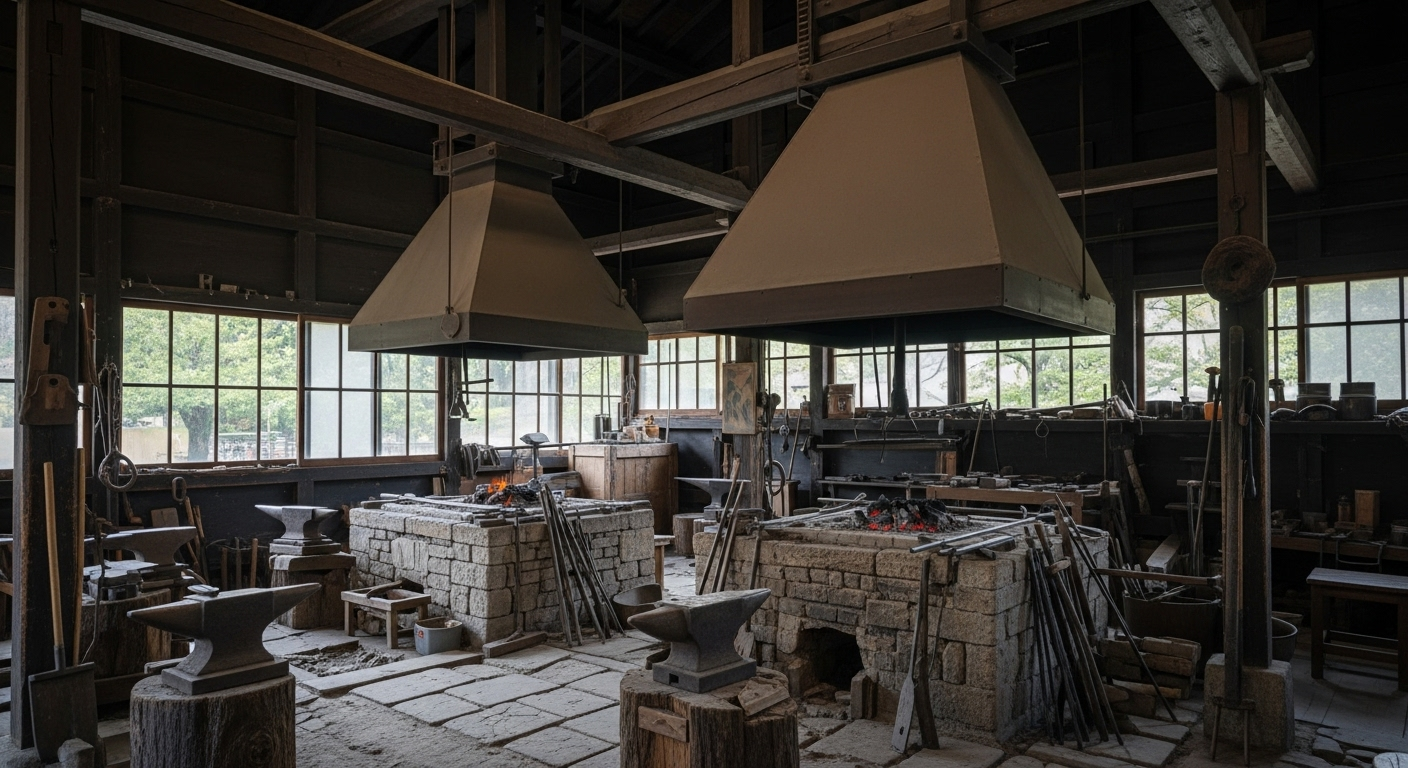
FAQ About White Steel #2
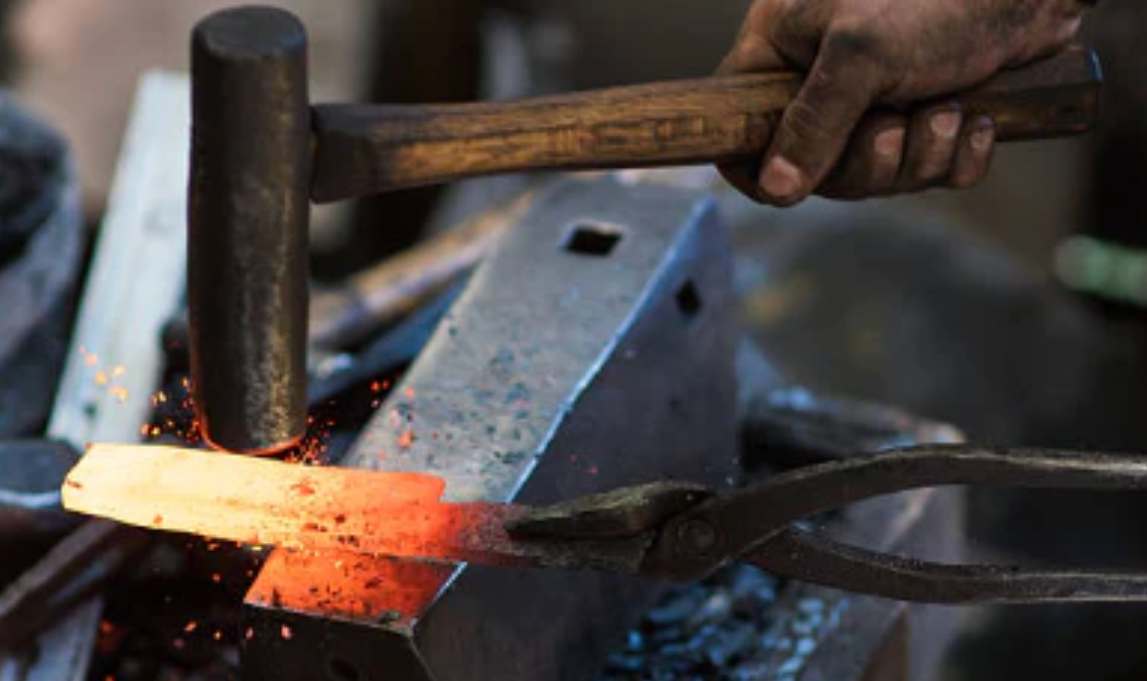
01. What is White Steel #2?
White Steel #2 (Shirogami No.2) is a high-purity carbon steel known for its razor-sharp edge, ease of sharpening, and clean feedback.
Made with only iron and carbon (approx. 1.05–1.15%), it contains virtually no alloying elements—allowing skilled sharpeners and chefs to feel every nuance of the blade.
Simple in composition, but profound in performance—this is the steel trusted by generations of Japanese craftsmen.
02. How is it different from White Steel #1?
Both are ultra-pure carbon steels, but the difference lies in carbon content:
- White Steel #1 has slightly more carbon, making it harder and better at holding an edge—but also more brittle and harder to sharpen.
- White Steel #2 is more balanced—offering sharpness, ease of sharpening, and a bit more forgiveness during daily use.
This balance makes White Steel #2 the go-to choice for both professionals and dedicated home chefs.
03. Is it better than stainless steel?
It depends on what you value.
If you prioritize cutting feel, edge sharpness, and the joy of sharpening, White Steel #2 is unmatched.
Stainless steels offer convenience and rust resistance—but they often lack the tactile connection and edge quality that carbon steels provide.
If you’re willing to care for it, White Steel #2 gives back more than it asks for.
04. Does it rust?
Yes—White Steel #2 is not stainless.
Its lack of chromium makes it more reactive to water, salt, and acids. But with simple care, rust can be easily avoided:
- Wipe the blade completely dry after use
- Avoid long exposure to acidic or salty ingredients
- Store in a dry place or apply camellia oil for longer storage
Caring for it becomes part of the craft.
05. Is it good for beginners?
Absolutely. Many chefs start their journey with White Steel #2.
- It’s easier to sharpen than harder steels
- It responds well to whetstone technique
- It’s widely used by both professionals and apprentices
It’s not just a beginner’s choice—it’s a steel that grows with you.
06. How should I maintain it?
- Wash and dry immediately after each use
- Use waterstones for sharpening—regularly, not just when dull
- Apply a light coat of oil if storing long-term
- Avoid bones, frozen food, or hard impacts
A knife made from White Steel #2 is more than a tool—it’s a teacher.
And every moment spent maintaining it deepens your connection to your craft.

Comprehensive Guide to White Steel and Blue Steel
When choosing a knife, the debate between blue steel and white steel resonates among chefs and culinary enthusiasts alike. Each type of steel offers unique advantages tailored to different cooking styles and maintenance preferences. This article explores the differences between blue and white steel, helping you make the best choice for your kitchen tools.

Comprehensive Guide to White Steel #1 and White Steel #2
White Steel #1 and White Steel #2 are among the most popular materials used in Japanese knives. This guide compares their unique characteristics and performance to help you choose the best option for your cooking style and needs. Whether you’re a beginner or a professional chef, find valuable insights for selecting the perfect Japanese knife.

Comprehensive Guide to White Steel #2 and Blue Steel #2
Explore the essential differences between White Steel #2 and Blue Steel #2 in our guide, focusing on their cutting performance, durability, and ease of sharpening. This article provides practical insights for chefs and cooking enthusiasts to make an informed choice between these two popular steel types for kitchen knives.

Japanese Knife Materials
In the realm of Japanese knives, the choice of material plays a crucial role in performance and maintenance. This guide delves into the nuances of carbon and stainless steel, including popular variants like White Steel #2 and Blue Steel #2, and newer innovations like ZDP189 and Ginsan.
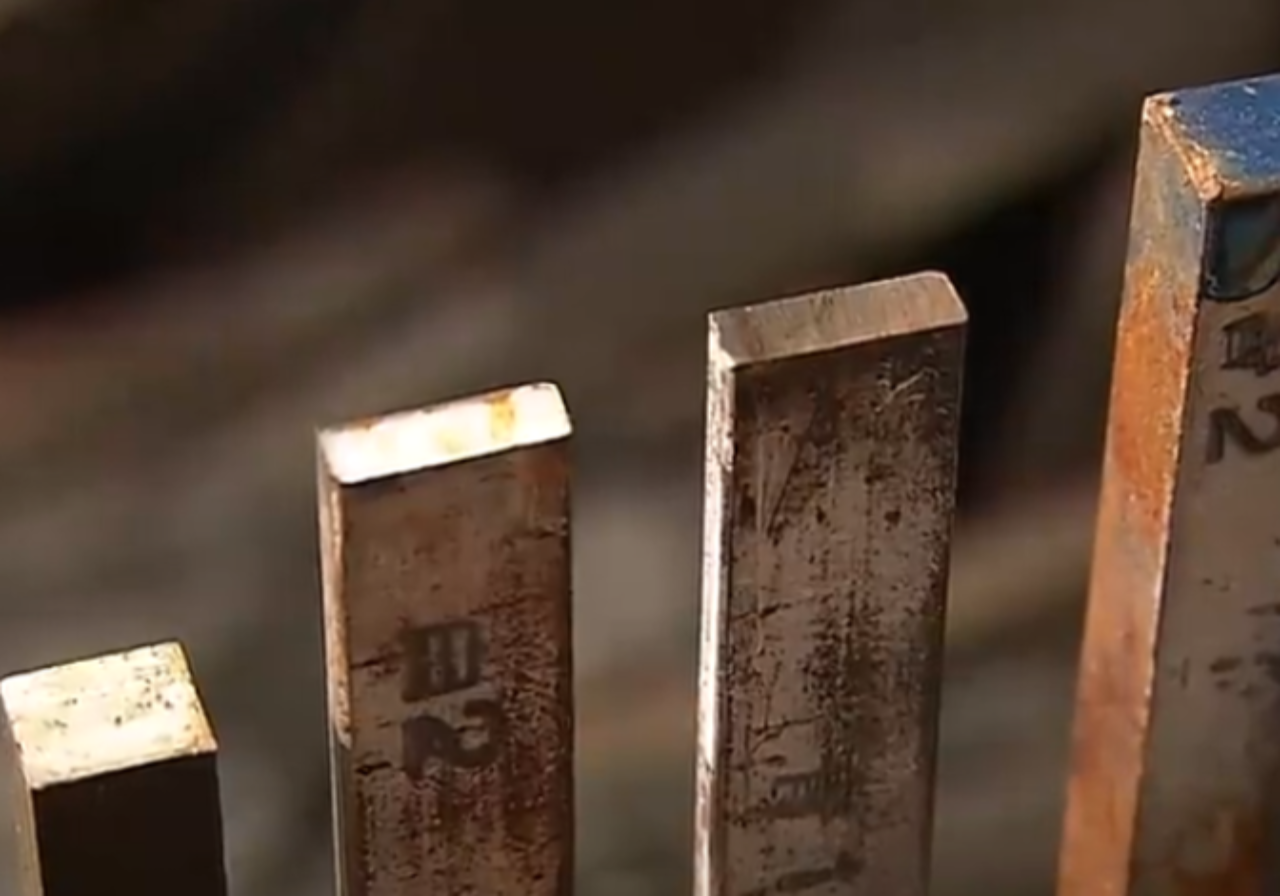
Yasuki Steel: The Heart of Japanese Knives—Its Current State and Future Prospects
This article explores the current status and future outlook of Yasuki Steel, the legendary material behind traditional Japanese knives, in light of the 2023 transition from Hitachi Metals to Proterial. It highlights the ongoing but uncertain production of White Steel and Blue Steel, the introduction of new high-performance stainless steels (YBS1/YBS2), and what these changes mean for knife makers, users, and collectors around the world. As the industry stands at a turning point, understanding steel is more essential than ever.
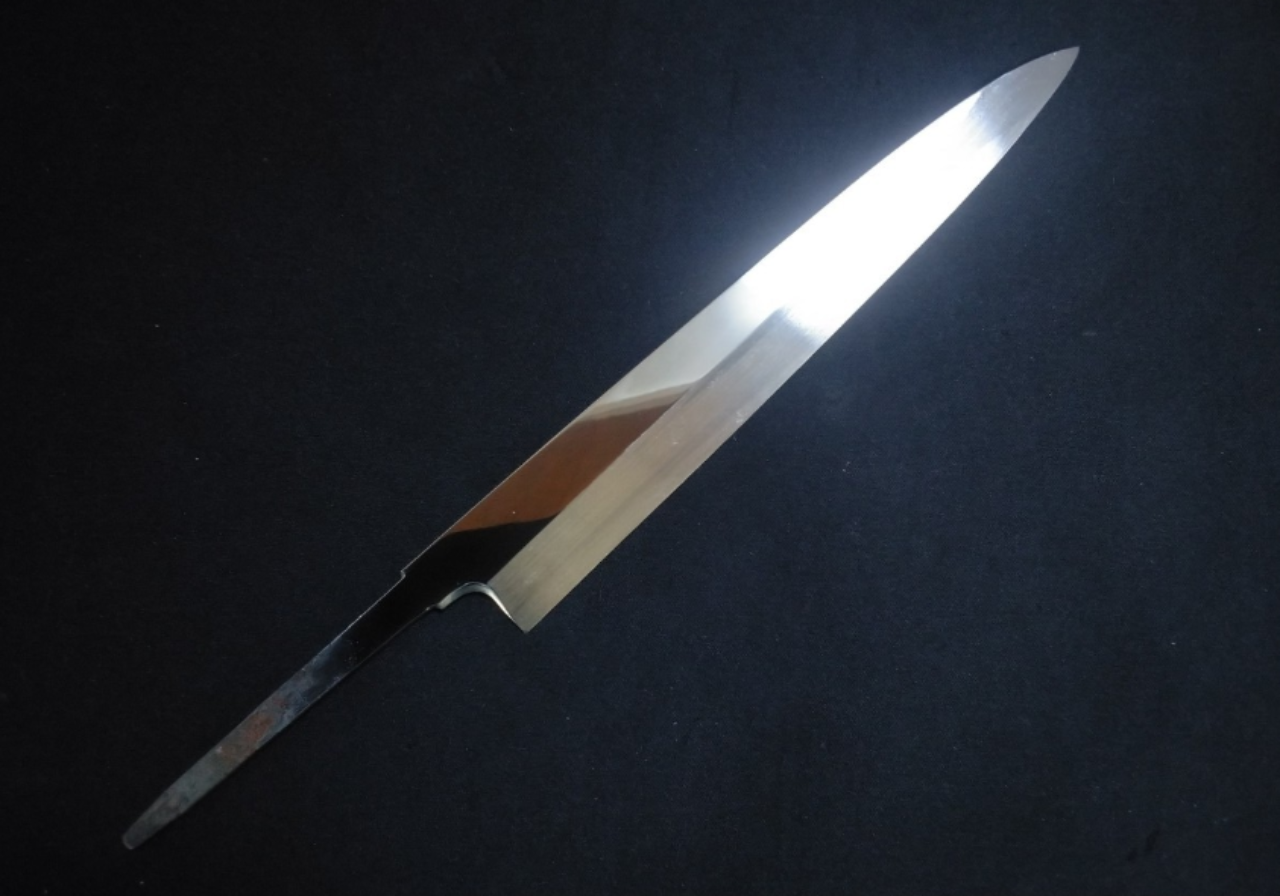
Unveiling the Charm of White Steel #2: A Timeless Classic in Culinary Knives
White Steel #2, also known as White Paper #2 steel, is a premium carbon steel cherished for its purity, sharpness, and ease of maintenance. As a staple in Japanese knife-making, it offers an ideal balance between hardness and flexibility, making it a top choice for chefs and artisans. Whether you're a beginner or an expert, White Steel #2 ensures precision in every cut while maintaining a legacy of craftsmanship.
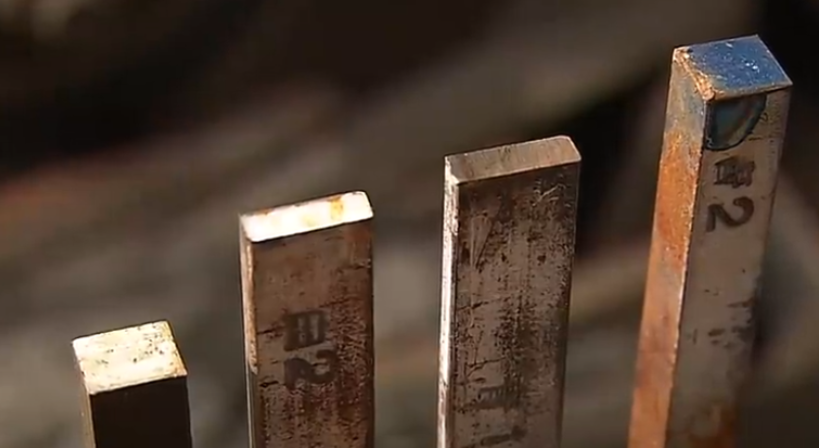
The Origin of Craftsmanship
-
White Steel #2: A Masterpiece of Craftsmanship—Why Now Is the Perfect Time to Own It
White Steel #2 is the pinnacle of Japanese blade craftsmanship. Forged through generations of expertise, it embodies the purity of iron and carbon—nothing more, nothing less. This simplicity is what makes it extraordinary: a steel that sharpens with ease, holds a razor-sharp edge, and can always be brought back to life.
-
But today, its future is uncertain. Shifts in production and changing market demands mean that true White Steel #2 knives may soon become increasingly rare. Owning one now is not just a choice of utility, but a chance to preserve a piece of living tradition.
-
A knife is never just a tool. It is the culmination of centuries of skill, trust, and pride. To hold a White Steel #2 blade is to hold that heritage in your hands, to feel the bond between craftsman and chef with every slice and every sharpening.
-
Yasuki Steel
Now is the moment to experience the unmatched sharpness, purity, and soul of White Steel #2. This is more than a knife—it is a legacy to be cherished and carried forward.
How Japanese Knives Are Made: The Sakai Tradition
Video Provided: Japan Traditional Crafts Aoyama Square (YouTube)
-
Sakai Forged Blades — Six Centuries of Unrivaled Craftsmanship
Loved by chefs around the world and trusted by 98% of Japan’s top culinary professionals, Sakai knives are more than tools—they are the living legacy of over 600 years of master craftsmanship.
-
At KIREAJI, we work directly with the Shiroyama Knife Workshop in Sakai, Japan, ensuring every blade is hand-forged, finished to perfection, and shipped straight from the workshop to kitchens across the globe. No middlemen. No mass production. Only authentic, artisan-made knives, crafted to elevate your cooking for a lifetime.


